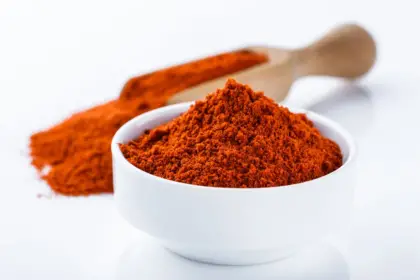Cast iron skillets have experienced a major resurgence in popularity in recent years, and for very good reasons. When properly cared for and maintained, these classic heavy-duty pans can literally last for generations.
Cast iron also provides health benefits – cooking acidic foods like tomatoes in cast iron can increase the iron content absorbed from the food. With the right techniques for seasoning, cooking, and cleaning, your cast iron pan will provide a lifetime of service while adding iron to your diet.
Common Cast Iron Mistakes to Avoid at All Costs
However, there are some all-too-common mistakes people make when using cast iron that can easily damage the pan or negatively impact the food.
First and foremost is not properly seasoning the pan. Seasoning builds up a natural non-stick patina, so without it, food is far more likely to stick. Cooking overly acidic foods before the seasoning layer is well-established can react with the iron and impart a metallic flavor.
Letting soap touch the pan strips away seasoning, so it’s best to clean with just hot water and a stiff brush or chainmail scrubber. Leaving cast iron pans to air dry can lead to rust, so always dry thoroughly.
Cooking at extremely high heat will damage the seasoning over time, so moderate, even heat is ideal. Letting food bits sit for too long makes them harder to remove, so it’s best to clean after each use.
Putting a still-hot pan in cold water can damage it from the sudden temperature shift – always allow it to cool fully first. Using harsh metal utensils instead of wood or silicone can scratch the seasoned surface. And forgetting to re-season after cleaning will allow the patina to degrade.
Following proper seasoning and cooking techniques is key to avoiding these common pitfalls.
Tips and Tricks for Ideal Cast Iron Cooking
When using cast iron pans, start by seasoning properly – coat with a thin layer of oil or shortening and bake in the oven to create a natural non-stick finish. This should be done regularly to maintain the patina.
Always preheat the pan slowly over low heat first, since cast iron holds heat so well. Sudden temperature changes can lead to hot spots and warping.
Be sure to use enough oil or butter during cooking to prevent food from sticking to the seasoned surface.
Avoid cooking very acidic ingredients like tomatoes, vinegar or wine that can react with the iron, unless you have an enamel-coated pan. Don’t let liquid ingredients sit in the pan too long during cooking, as they can start to break down the seasoning.
Deglaze and evaporate any moisture after cooking. Only scrub the pan gently with a brush, salt, or chainmail scrubber and hot water. Avoid using soap on seasoned cast iron.
Make sure to immediately and thoroughly wipe dry after cleaning to prevent rust. Rub a tiny bit of oil on before storing to help maintain the seasoning. Store carefully, with pan protectors to prevent scratches. Moderate, even heat is best for cooking – high heat can degrade the seasoning over time.
Proper Seasoning and Maintenance
To properly season cast iron, coat the entire pan with a thin, even layer of oil or shortening – avocado, coconut and flaxseed oils work well. Bake it upside down in the oven at 350°F for an hour.
Repeat as needed, and continue cooking oiled foods to further build up the patina over time. Be careful not to ever let soapy water touch the pan, as soap will strip away seasoning very quickly.
If food does happen to stick, boil water in the pan for several minutes to loosen it, then use a brush or chainmail scrubber to clean gently. Always re-oil the pan after cleaning and before storing to maintain the protective layer.
Ideal Foods and Safe Cleaning Techniques
The best foods to cook in cast iron include meats, vegetables, baked goods, eggs, pancakes and other breakfast foods. These all benefit from the great heat retention and sear that cast iron provides.
To clean safely, scrub with hot water, coarse salt and a brush or chainmail scrubber. For stuck on food, boil water for several minutes to loosen, then scrub gently. Always dry immediately and rub with oil after cleaning to maintain the seasoning.
Never ever use harsh soaps on seasoned cast iron pans! Following these simple guidelines will keep your cast iron in wonderful cooking condition for generations.
Care for Your Cast Iron and it Will Outlast You
With its versatility, durability, and health benefits, it’s easy to see why cast iron cookware is having such a major resurgence. But like any prized kitchen tool, this classic pan requires some special care and handling to maintain its performance and longevity.
By seasoning properly, cooking over the right temperatures, limiting acidic ingredients, and cleaning gently but thoroughly after each use, you can avoid the common cast iron pitfalls. Your food will cook more evenly with the perfect crisp crust, all while adding more nutrition to your meals.
Treat your cast iron pan with the TLC it deserves, and it will likely outlast you to pass on to the next generations. Follow these essential tips, and you’ll never have to worry about rust, stuck-on food or wearing our your pan. With the proper culinary care, your heirloom cast iron can faithfully serve your family for generations to come.





